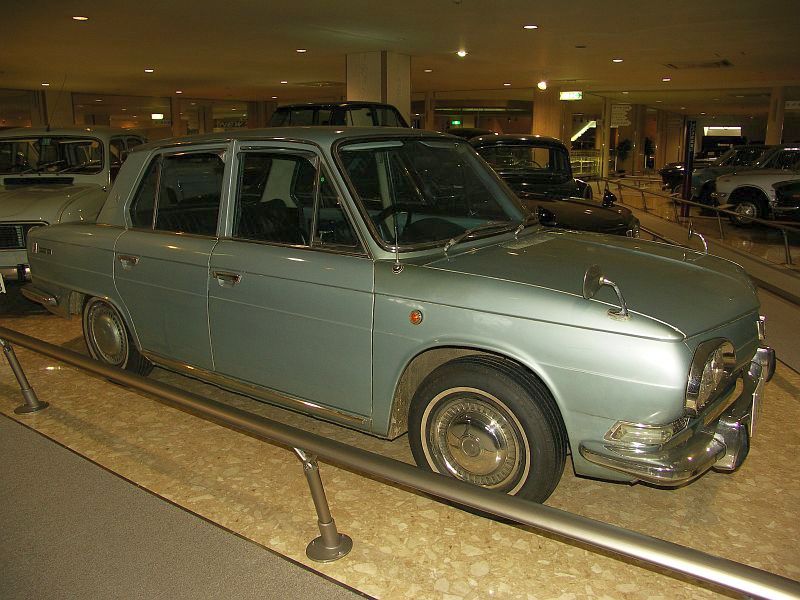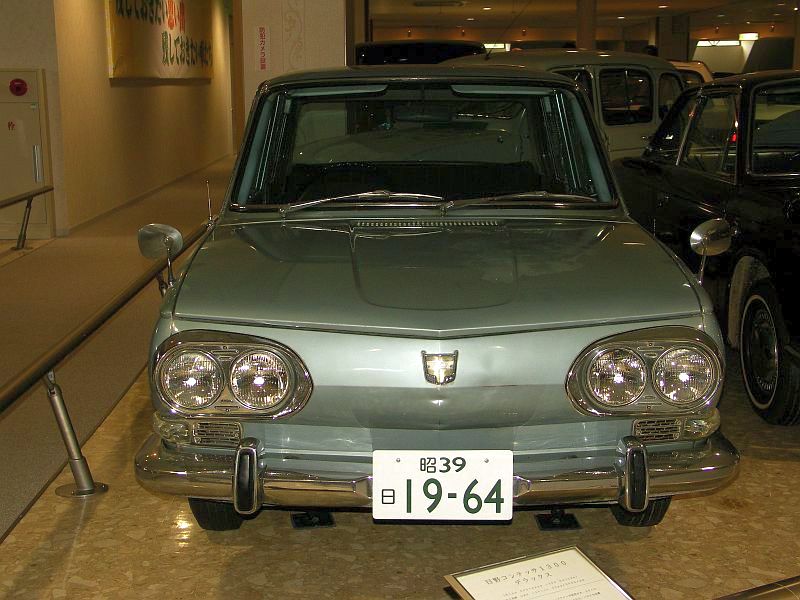Description
The Hino Contessa 1300 Deluxe was the more refined and better-equipped version of the second-generation Contessa series, introduced in 1964 as part of Hino Motors’ effort to establish itself as a serious manufacturer of quality passenger cars. Building upon the solid engineering of the standard Contessa 1300, the Deluxe model added improved trim, enhanced comfort, and subtle styling upgrades—appealing to buyers who wanted a small car with a touch of luxury and European flair.
The Contessa 1300 Deluxe was designed by Giovanni Michelotti, whose influence gave the car crisp, modern lines and an elegance that stood out in mid-1960s Japan. The body featured the same low, balanced proportions as the base model but with additional chrome detailing and more refined finishes. The wide horizontal grille with quad headlamps gave the front a sophisticated, almost Italian appearance, while the smooth rear engine deck and tapering tail added aerodynamic grace. Whether in sedan or coupé form, the 1300 Deluxe exuded understated class—its styling closer in spirit to a small Alfa Romeo or Triumph than to most Japanese contemporaries.
Inside, the Deluxe model was noticeably more comfortable and better appointed than the base versions. The cabin featured upgraded upholstery, improved carpeting, and additional chrome accents on the dashboard and door panels. The instrument cluster included a full set of gauges, including a tachometer in some configurations, reflecting the car’s slightly more upmarket positioning. The seats were supportive, the controls were well laid out, and visibility was excellent thanks to the car’s thin pillars and large glass area. While compact, the interior had a level of refinement that made the Contessa 1300 Deluxe feel more like a European touring car than a domestic economy model.
Power came from Hino’s 1,251 cc water-cooled inline four-cylinder engine, mounted at the rear in keeping with the Contessa’s unconventional layout. In standard Deluxe form, the engine produced around 55 horsepower, though higher-output twin-carburettor versions were available in the sportier 1300S. Power was transmitted through a smooth four-speed manual gearbox, and the rear-engine, rear-wheel-drive configuration gave the car distinctive driving characteristics—lively acceleration off the line and excellent traction, especially on wet or hilly roads.
On the road, the Hino Contessa 1300 Deluxe offered a balance of comfort and control that reflected its dual purpose as both a commuter car and a refined touring vehicle. The independent rear suspension and well-tuned chassis provided a smooth, composed ride, while the light steering and compact dimensions made it ideal for urban driving. The car’s rear-engine layout gave it a unique feel—slightly tail-heavy at the limits but stable and responsive when driven with care. Owners often praised its quiet engine, solid build quality, and reliable performance, qualities that distinguished it from many early Japanese rivals.
The 1300 Deluxe helped strengthen Hino’s image as a manufacturer of well-engineered, stylish, and technically advanced small cars. However, production was short-lived. In 1967, Hino Motors was absorbed by Toyota, and the company’s passenger car division was discontinued soon after. The Contessa 1300 range—particularly the Deluxe and 1300S models—marked the end of Hino’s foray into the private car market.
Today, the Hino Contessa 1300 Deluxe is considered one of Japan’s hidden gems from the 1960s. Its Italian design, distinctive engineering, and rarity make it highly collectible among enthusiasts of early Japanese and European-influenced cars. It stands as a refined expression of Hino’s ambition during a brief but remarkable period in its history—a small car that combined technical innovation, elegance, and individuality in a way few others of its era could match.


